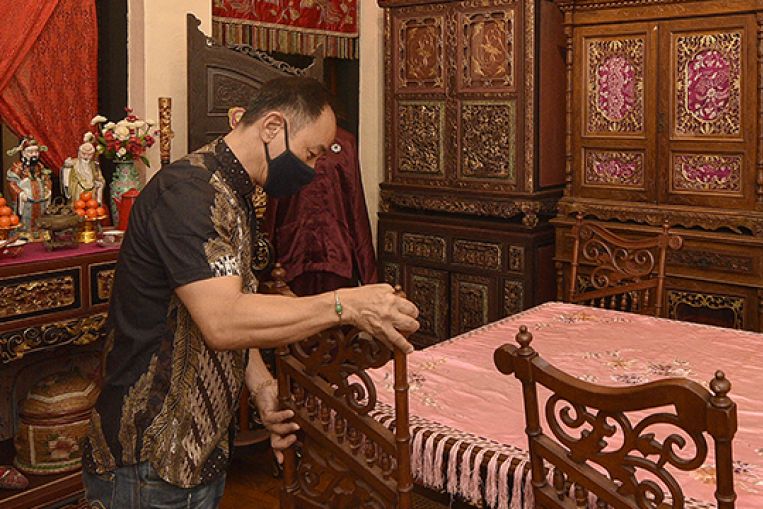A Peranakan Treasure Museum, Photos News & Top Stories
Katong, home to some good Peranakan restaurants, is also where Katong’s ancient house is located.
The private museum, located in a two-story boutique in the area, houses 100 years of Peranakan history, with antiques dating back to the 1800s.

The artifacts are so popular with visitors that some would travel to Singapore to ask if they could buy them.
Ms Angeline Kong, 54, a volunteer who also helps run the museum, said: ‘A lot of people have asked us if we are selling things here … but no, we are not selling anything at the moment as the intention is to pass on the culture and be able to share their stories, which is Uncle Peter’s wish. “
Uncle Peter is the late Peter Wee, a fourth generation Peranakan who founded the museum.
He was passionate about preserving Peranakan heritage and culture among the younger generations. The Peranakans are the descendants of immigrant traders who married local women and settled in settlements in the British-controlled straits of Singapore, Penang and Malacca, as well as in Indonesia and Phuket.

Mr. Wee has spent over 40 years amassing the valuable collection of antiques that can be found today at Katong Antique House.
Its rooms are filled with heirloom items and items like intricately beaded slippers, colorful enamel tiffin racks, and ornate wardrobes and chairs.


Mr. Wee, a descendant of philanthropist Tan Keong Saik, inherited the East Coast Road store from his maternal grandfather in 1966 and transformed it into the Katong Antique House in 1979.
He died in 2018, at the age of 71.
The new caretakers of the museum are Mr. Eric Ang, 60, a former assistant to Mr. Wee, and Ms. Kong, who was a close friend of Mr. Wee.



Both share the late founder’s goal of preserving the stories and memories of Peranakan culture, so they maintain the private museum and organize tours by appointment. Admission is $ 15.
Ms Kong says: “Friends have come, visitors have come, until Covid-19 arrived. We took the opportunity to renovate the place, which has not been renovated for almost 40 years.”



They redid the wiring and lighting, resurfaced the walls and reorganized the museum to make it more accessible to the public.
Mr. Ang cleaned up the museum and sorted some pieces from Mr. Wee’s collection that were previously kept in cupboards, so that they could be displayed to the public.


The museum reopened in May after nine months of renovation.
Ms. Kong, who is Peranakan, said of the mission, “We want to keep the legacy alive.”



